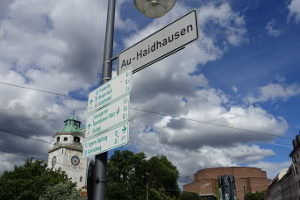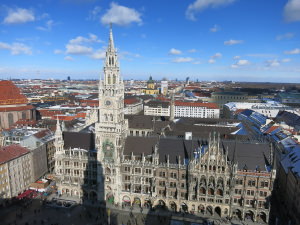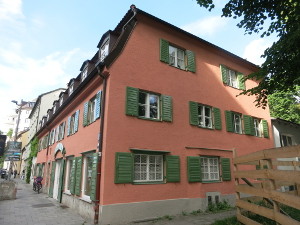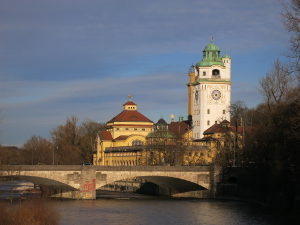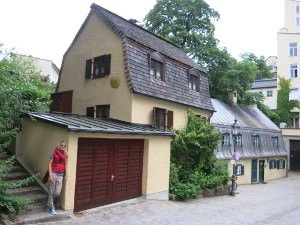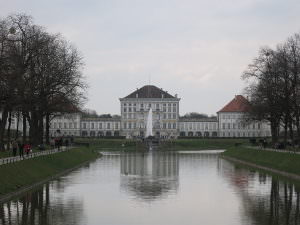Best Neighborhoods in Munich
The main classification of the different neighborhoods in Munich are the so-called municipalities (Stadtbezirke) of which there are 25 in total.
These 25 municipalities itself are then divided into 107 parts of municipalities (Stadtbezirksteile).
The best classification in our opinion though is by means of the quarters of Munich (Stadtteile).
They are most common in usage as they allow to allocate most precisely the area of which you are talking of and their origin is mostly of the historical classification (some of the quarters used to be independent localities back in the years e.g. Au, Haidhausen, Schwabing or Thalkirchen).
All quarters have a different character and depending on your preferences (and also monthly budget for the rent) you will chose your favorite quarter to live in.
List of Munichs best Neighbourhoods
– Altstadt
– Au
– Bogenhausen
– Giesing (Ober- and Untergiesing)
– Haidhausen
– Isarvorstadt
– Lehel
– Neuhausen
– Schwabing
– Thalkirchen
If you should already be hungry, continue reading our article about the best restaurants in Munich. And afterwards continue your journey : )
Altstadt
The old historical part of Munich incl. the Marienplatz, the Neues Rathaus and the Viktualienmarkt.
It’s not the type of quarter to really live in as you find many shops, doctors and a lot of tourists here.
If you should find an apartment here (which is even harder in this area due to its central location and the high demand of high-earning people), rents will be quite high.
If you should own a car, the only possibility for parking is in an under-ground parking space belonging to your apartment (which costs of course extra) or in a parking lot, where few spaces for long-term parkers are available.
The Altstadt is a very nice quarter as it’s the old city centre, but there are way better ones to actually live in.
Facts about the Altstadt:
- The Neues Rathaus was actually built under an Austrian-German architect called Georg von Hauberrisser
- It is said that the famous Münchner Weißwurst (white sausage from Munich) was invented in the Inn „Zum Ewigen Licht“ on Marienplatz right opposite of the Neues Rathaus
By the way: one of the most important things which you need to have before being able to sign a rental contract is a bank account.
Au
The Au is one of Munich’s nicest quarters and has a very special charm – unfortunately a lot of the historical buildings were destroyed in WWII, but you still can find some which survived the bombings, for example in the Zeppelinstraße 9/11/13.
The former city Au was incorporated in Munich in 1854, centre was and still is the Mariahilfplatz with its nice church Mariahilf – also destroyed in WWII but rebuilt by the inhabitants of the Au right after the war .
On the big square around the church the well-known Auer-Dult takes place three times a year – a fair with some rides (more for small children) and lots of possibilities for eating and
a huge market where all kind of things like antiquities and especially tableware is sold.Its close location to the Isar with its town beaches make it very liveable here.
The Paulaner am Nockherberg where the world famous stout beer festival (Starkbierfest) takes place every year, certainly is one of the main attractions of the cosy quarter Au.
Rents are fairly high due to the proximity of the city centre and the Glockenbachviertel but once you have seen this nice quarter, you certainly want to stay here like us!
Facts about the Au:
- In 1882, famous German comedian Karl Valentin was born in the house at Zeppelinstraße 41, which survived until today
- Georg Schwarzenbeck, world champion in football 1974, had a small stationary shop in Ohlmüllerstraße 9 (until 2008)
- Besides the famous beer garden, the headquarters of the Paulaner GmbH und Co. KG as it’s officially called is located in the Au
Bogenhausen
One of Munich’s less destroyed quarters as only few buildings were destroyed during WWII and therefore completely could preserve its character.
For a lot of people, Bogenhausen is the synonym of the „rich Munich“, which is absolutely true.
You will find a lot of small castles and huge villas of the old aristocracy in this area and the real estate prices both for buying and renting are astronomic.
You might want to check your budget twice if you want to move here. Bogenhausen is also full of history.
The Earl Montgelas, responsible for the contract of Bogenhausen („Bogenhausener Vertrag“) for example lived here in his castle, the so-called „Fleischerschlösschen“.
Facts about Bogenhausen:
- – the secret contract of Bogenhausen between the electorate of Bavaria and France was the contractual basis for the beginning of the Kingdom of Bavaria („Königreich Bayern“)
- – Hitler used to live here for some years, his flat was located in a building on the Prinzregentenstraße 16 (Prinzregentenplatz), 2nd floor – nowadays the building houses a police station
Giesing
Besides Au and Haidhausen, Giesing was under the first towns to be incorporated in the city of Munich in 1854.
Giesing used to be Munich’s working-class district and somehow remains it until today – it’s also the home of the football club 1860 München which is said to be the club of the blue-collar workers which underlines even more the character of this quarter.
The symbol of this quarter is the Heilig-Kreuz-Kirche – built in neo-Gothic style and opened in 1886 after 20 years of construction.
Giesing is very popular amongst people who do not want to spend too much on rent (even though there are areas which are expensive of course) and want to live close to the city centre.
Facts about Giesing:
- Germany’s first McDonalds restaurant was opened in the Martin-Luther-Straße in 1971
- Germany’s most popular football player Franz „the Kaiser“ Beckenbauer was born and raised in the Zugspitzstraße
- The Stadelheim prison, where many RAF terrorists have been kept, is located in Giesing
Haidhausen
This quarter is among the three quarters to be incorporated into the city of Munich in 1854.
Centre of the old city of Haidhausen was and still is today the Orleansplatz which is the base for the symmetric three-ray layout of the district Ostbahnhofviertel („Dreistrahlenanlage“).
For a long time, Haidhausen had the reputation to be a so-called quarter of broken glass (Glasscherbenviertel), which means nothing else than quarter of the poor people.
This changed beginning of the 1980’s, when the huge industry areas were pulled down, new apartment buildings were built and the old buildings were gradually renovated.
Old remains of the lodging for the poors can still be found today in the street An der Kreppe or the Preysingstraße.
Nowadays, Haidhausen is one of Munich’s most popular areas to live in which also reflects in the high real estate prices.
Facts about Haidhausen:
- Back in the 18th and 19th century, there were dozens of huge vaults for cooling the beer in the area where the Gasteig is located and also near the Hofbräukeller
- One third of the structure of Haidhausen are historical buildings
- Once again Hitler: he delivered his first political speech in the Hofbräukeller in 1919 in front of 111 people
Isarvorstadt
Together with the quarter Ludwigvorstadt, this quarter forms the municipality Ludwigvorstadt-Isarvorstadt.
Isarvorstadt itself is formed of the quarters Deutsches Museum, the Schlachthofviertel, the Glockenbachviertel and Gärtnerplatzviertel.
The two last named quarters are a very bad example – probably even the worst – of gentrification in Munich. Both the Gärtnerplatz– and the Glockenbachviertel used to be quarters of the workers just like the Au. Nowadays, only people with high income live here as rents and real estate prices just exploded.
But one can understand why especially the Glockenbachviertel is so popular: You are close to the city centre, you find many old buildings which have been completely renovated, the Isar and its beaches are near and you have a lot of stylish bars and nice shops and good restaurants here.
The Gärtnerplatz with its theatre beside is a very nice if not THE nicest of all places in Munich.
As soon as spring begins and it gets warmer, the Gärtnerplatz is crowded with young people, the ones who stayed young, students and hipsters (if there are ones in Munich at all), sitting in the grass and drinking a beer which you comfortably get at the Tengelmann or Penny supermarket which are just located at the Gärtnerplatz.
Facts about Isarvorstadt:
- Freddie Mercury, frontman of the British Pop group The Queen used to have a flat in the Pestalozzistraße
- The same Freddie celebrated his 40th with a legendary birthday party in the club Henderson, located at Rumfordstraße 2 – today this club is called Paradiso and is absolutely worth a visit
- Glockenbachviertel is one of the centres of the gay scene in Germany (you will recognize that e.g. by the name of the venues like Edelheiß, Bau or Deutsche Eiche
Lehel
The quarters Lehel and Altstadt together form the municipality Altstadt-Lehel.
At the beginning of the 14th century, the Auenwaldgebiet as it was called back then was inhabited by the poors. Only in 1724, it fell under the jurisdiction of Munich.
In course of the great city extension in 1812 (don’t mix it up with the first incorporations of Au, Haidhausen and Giesing in 1854) it was named to St-Anna-Vorstadt – analogous to other suburbs like Isarvorstadt or Maxvorstadt (Vorstadt means nothing else than suburb).
However the name could never be established and the quarter was later named to its current name Lehel.
It’s assumed that most likely the name originates from „Löhel“, a small alluvial forest.
Nearly undestroyed in WWII, the Lehel is full of historical buildings and museums like the Alpines Museum and the Bayerisches Naionalmuseum, the Bavarian National Museum.
As you already guessed correctly, rents are very high here so you might check your budget twice if you want to move here.
Though you find many specialized shops, nice bars and restaurants here which makes the Lehel definitely worth living.
Facts about the Lehel:
- Famous German TV series Meister Eder und sein Pumuckl was partially shot in the Widenmayerstraße 2 – unfortunately the building was pulled down in the 80’s. Nowadays the building of a bank is located there
- Some parts of the Englischer Garten belong to the Lehel including the Monopteros and the Chinesischer Turm
Nymphenburg
The quarter of Nymphenburg was integrated in Munich in 1899 and is named after – which surprise – the beautiful Schloss Nymphenburg, the former summer residency of the Bavarian electors and kings.
Together with Neuhausen it makes up the municipality Neuhausen-Nymphenburg.
Besides the castle, the botanic garden which is located just beside it and the Porzellanmanufaktur Nymphenburg are to mention as well.
Due to it’s direct connection to the Autobahn A8 and the Mittlerer Ring, the traffic in certain areas of this quarter is quite high.
The character of the quarter is mixed, gentrification is also a problem here.
If you like green areas – the huge park of the castle and the Olympiapark which is in the East of the municipality – and you don’t mind the distance to the city centre, then Nymphenburg is a good choice for you.
Did I already mention that rents are also in the higher price level – of course.
Facts about Nymphenburg:
- Initially it was planned that the Schloss Nymphenburg would be the centre of a new „Carlstadt“, a city that was planned similar to the city Karlsruhe in the state Baden-Württemberg
- During the winter months from December – March, numerous exotic butterflies can be seen in the tropic greenhouse – they are flying around freely
Schwabing
Shame on us – just now we realized that the section about the quarter Schwabing is still missing!!
If you talk of Munich, you name Schwabing in the same sentence – Schwabing always was and still is today the epitome of Munich.
It was the Bohème-quarter during the „Prinzregentenzeit“ (time when Luitpold von Bayern ruled Bayern as Prinzregent from 1886 when König Ludwig II drowned in the Starnberger See until his own death in 1912) and has conserved it’s character as a quarter of artists, writers and all kinds of „Freidenker“ until today.
Most part of the Ludwig-Maximilians-Universität is located in Schwabing as well as a huge (and quite old) hospital.
In the South it borders on the Maxvorstadt (height Siegestor/Georgenstraße), in the East it’s bordered by the river Isar, in the West by the Lothstraße and in the North the border runs through the Petuelpark and Milbertshofen.
Also the Northern part of the Englischer Garten belongs to Schwabing. Schwabing together with Bogenhausen is the most expensive quarter of Munich with sheer unlimited high rents for stylish lofts and maisonnettes way above average – you get the point.
For going out at night, the Türkenstraße as well as Schellingstraße are one of Munich’s best nightlife areas with lots of bars, restaurants and also the one or the other small Biergarten.
The Elisabethmarkt at the Elisabethplatz is one of Munich’s nicest markets if not THE nicest market, definitely worth a visit – be sure to visit it as soon as possible as it’s been discussed it’s new construction at the moment!
Some words about the history: In 782 Schwabing was mentioned in a document for the first time and is therefore way older than Munich itself, which was founded in the 12th century.
The name probably originates from a Swabian (!) who settled here for the first time.
It evolved to a rural idyll where Bavaria’s kings and prince regents soon had their little castles.
Obviously coherent aside the arterial road to Schwabing, the Max(limilians)- and Ludwigs-Vorstadt were founded, also the buildings of the university which was built in 1840.
The Kunstakademie (University of Arts) later found its place here too, while Schwabing itself developed to the „outter academic intellectual“ center. It was promoted to the rank of city in 1886 and incorporated to Munich on 20 November 1890.
Facts about Schwabing:
- The municipality Schwabing-Freimann is the biggest municipality of München with over 100.000 inhabitants
- Gentrification of Schwabing is considered to be finished (unfortunately)
- THE bar of Schwabing, the Schwabinger 7, has been pulled down in 2011 and replaced by an apartment block
- Over 50% of the households are single ones and ca. 10% are DINK-ones
Thalkirchen
The quarter Thalkirchen is part of the municipality, attention: Thalkirchen-Obersendling-Forstenried-Fürstenried-Solln; ufff. It was formed by several quarters in the territorial reform of 1992 when most quarters were grouped into new municipalities.
We picked out the most beautiful quarter of the ones mentioned above – Thalkirchen – the ideal quarter for all families.
It’s very green with lots of playgrounds, the Isar with its famous Flaucher isle, one of Munich’s oldest beer gardens, the Schützengarten and the Naturbad Maria Einsiedel can also be found in Thalkirchen.
Last but not least to mention the Tierpark Hellabrunn, which is just on the other side of the Isar in the quarter Giesing (more precisely Untergiesing).
Thalkirchen was mentioned the first time in 1268 as “Kirche im Tal” which means church in the valley.
Today, the church St. Maria which dates from 1400 can be found on the place of the first church at the Fraunbergplatz 1. Thalkirchen was incorporated quite late in 1904.
Rents are still affordable here and you even don’t need a resident parking permit in most of the quarter so your visits from abroad can easily and above all gratis park their vehicles in front of your house.
An interesting information for the ones among you with older Diesel cars or maybe a VW Bulli 🙂 at the moment you don’t need the green environmental badge to enter Thalkirchen.
Facts about Thalkirchen:
- The Western and Southern borders of Thalkirchen mark the Munich city limits
- The highest point of Munich is on the ground of the monastery Warnberg (579m above sea level)
Continue reading if you need help finding a place to live in Munich in order to get ahead of competition and to get your dream apartment in Munich.
